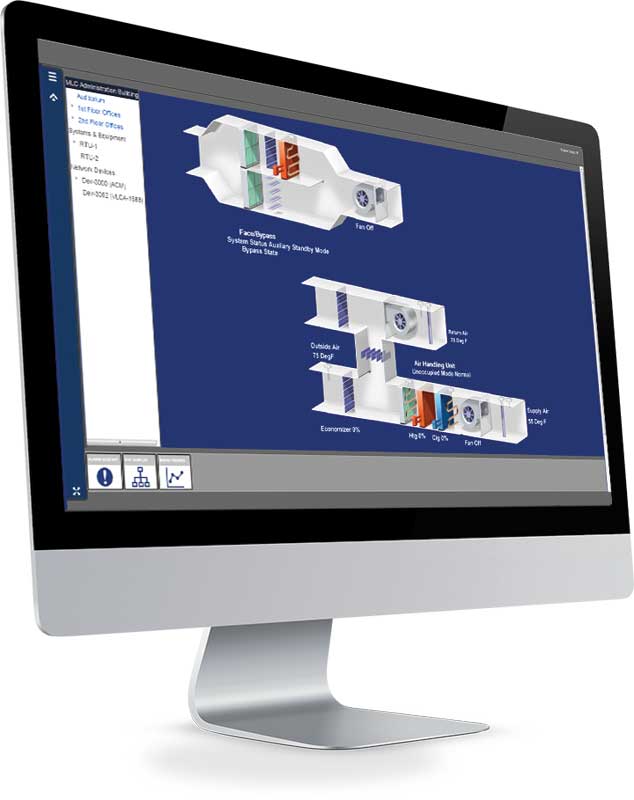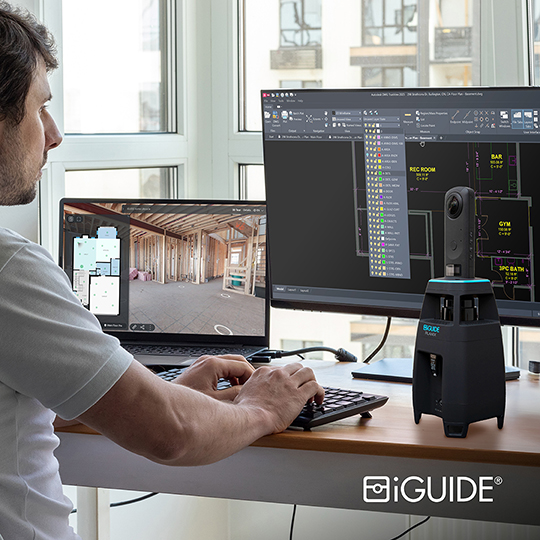Reducing hospital energy costs via building automation

Control module can integrate numerous building systems
Although many hospital facility operators rely on their BAS only to monitor and control HVAC equipment, a properly appointed building automation system can integrate numerous other building systems, including:
- lighting;
- access control;
- fire and life safety;
- elevators and escalators; and
- domestic and process water.
Integration is made possible via widely adopted operating protocols, especially the industry standard BACnet protocol developed by the American Society of Heating, Refrigerating, and Air-conditioning Engineers (ASHRAE).
Numerous building equipment manufacturers and BAS developers have adopted BACnet, which means one system can monitor and control equipment supplied by many parties. In other words, rather than controlling HVAC equipment and lighting from different systems, a BACnet-enabled BAS allows for scheduling of both from a single platform, greatly simplifying work for facility operators.
Simple-to-use wall units
The great majority of hospital personnel are unaware a powerful BAS is operating behind the scenes to improve their building’s efficiency. Nevertheless, when a room feels too hot or too cold, facility managers can count on building occupants looking for a wall unit to adjust the settings. Rather than being a simple thermostat, today’s wall sensors can monitor and display a host of environmental conditions, such as interior and exterior temperatures, RH, and CO2 levels.
To avoid unnecessary calls to the facilities staff asking, “How do I adjust this thing?” it is important the wall units be instinctual. To this end, units are now available with the design sophistication of a smartphone. Easy-to-interpret icons allow building users to quickly and easily figure out how to change settings, and colour LEDs enable them to quickly know the HVAC system’s status (i.e. heating, cooling, or standby). As mentioned, some units can even be programmed to show when a room is properly postured, offering doctors and nurses assurance the space is ready for patient care.
Conclusion
As BAS manufacturers move their systems to the cloud, analytical power will skyrocket. Combined with the growth of artificial intelligence (AI), building automation will become smarter, learning how a facility is operated and managed. More data from the BAS and other systems enables the analytical AI to understand more about the facility than just what is going on with the air-conditioning. In hospitals, the BAS might be able to interact with the patient environment, such as adjusting the room temperature set point, dimming the lights, operating the window blinds, and managing the audio/visual entertainment system.
A BAS can also be used in unexpected ways—some systems help patients or visitors with wayfinding, as hospitals can be notoriously difficult to navigate. This can take the form of a mobile app helping users find their way.
The possibilities continue to expand as BAS manufacturers, systems integrators, and facility operators ask themselves “what if?” when considering how a BAS can further benefit hospital owners, staff, and patients.
| BAS AND THE CLOUD |
| The ‘cloud’ is tech-speak for the giant data farms renting their computer servers to clients around the world. In other words, rather than relying on the computing power and memory of its own computers—whether desktop computers or onsite servers—an organization accesses remote computers via the Internet to accomplish business needs. As building automation systems (BAS) become more sophisticated, manufacturers are migrating their systems to the cloud to take advantage of the massive computing power and data storage available there.A key benefit for facility operators of cloud-based BAS is the ability to rapidly scale up (or down) their computing resources, without a large capital outlay. For example, if a hospital is adding new buildings to its campus, BAS data storage needs will likely increase when those facilities open. On the other hand, if a hospital operator closes one building to move to another, its data demands might taper or even decline somewhat as buildings are closed for refurbishment or demolition. With a subscription from a cloud service provider, organizations pay for just the right amount of computing power—neither too much nor too little—and can adjust very quickly.Another important BAS-enabled function for which more building owners are looking to the cloud is automated, continuous building commissioning. It takes a substantial amount of computing power and data storage to run the performance algorithms needed for continuous commissioning. Operating in the cloud, a hospital’s BAS can frequently evaluate if various building systems (e.g. HVAC and lighting) are still performing at optimal conditions as they did when they were installed and commissioned. For example, should a chiller begin to operate out of spec, the facility managers can see the performance reduction immediately and take corrective action. The cloud also provides the power for more sophisticated fault detection, diagnostics, and analytics. In essence, it expands the potential for facility operators to use their BAS to optimize building systems, saving time and money on building operations maintenance. |
Kevin Callahan is a product owner and evangelist for Alerton, a Honeywell business. He has 40 years of experience in the building control technologies field, including control systems design and commissioning, user training, and product development. Contact him via e-mail at kevin.callahan@alerton.com.


